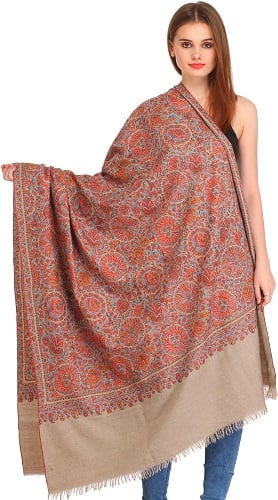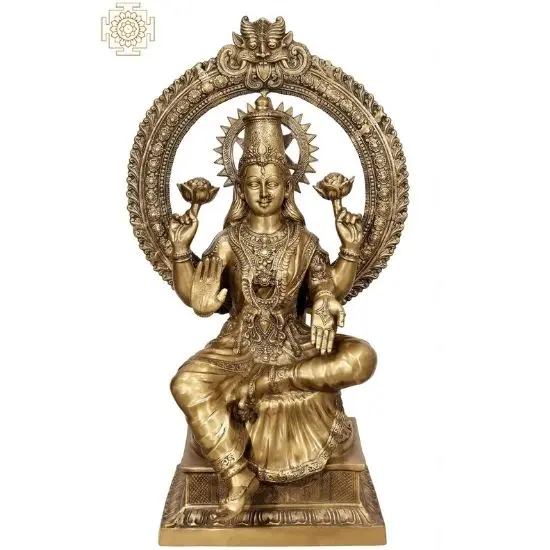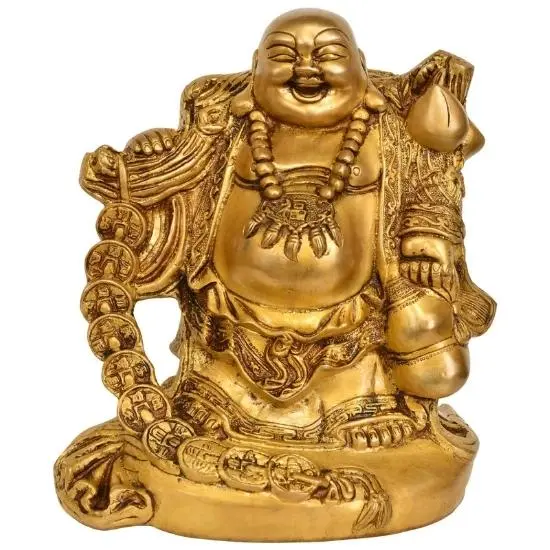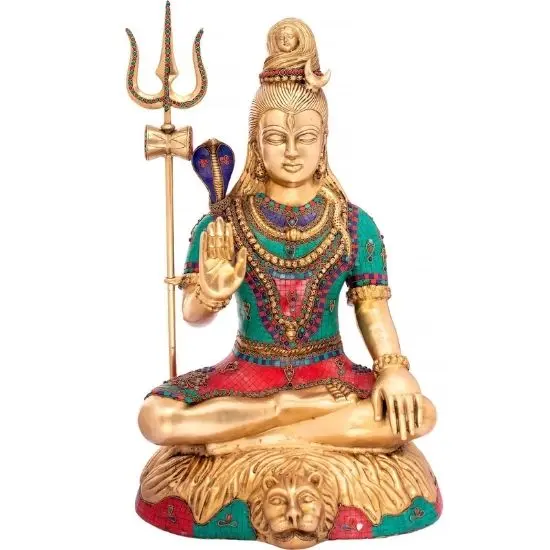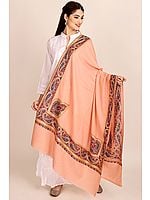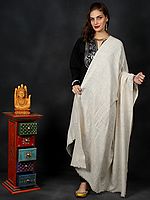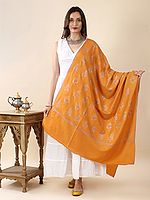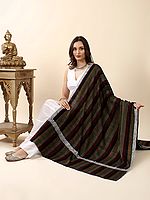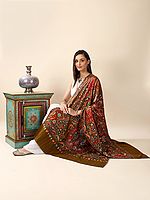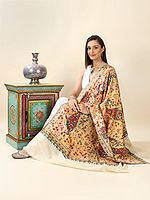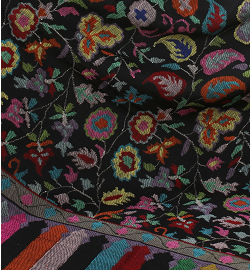Table of Content
Introduction
The tradition of pashmina shawls
The Mughal Empire and Pashmina Shawls
Pashmina shawl and the French nobility
How is a pashmina shawl made?
The quality of pashmina shawls
The appeal of pashmina shawls
Conclusion
Is there anything more beautiful than a pashmina shawl? No two styles are the same, with a spectrum of colors and infinite designs to choose from. Pashmina shawls take their name from Pashmina goats that reside high in the mountains of Nepal and across India and Tibet.The word ‘pashmina’ comes from ‘pashm’, meaning ‘inner layer of hair’. These scarves add a sense of luxury to your everyday life. While one human hair is 75 microns thick, normal cashmere is typically 20 microns.What makes pashmina cashmere so luxurious is that it is 12 microns thick, meaning it is 6 times finer than the typical human hair. It takes around three goats to produce enough hair for a pashmina shawl.Pashmina cashmere is spun using the downy undercoat of the Himalayan Mountain goat. These goats famously live at a high altitude of above 15,000 ft. The colder climate of the Himalayan Mountain range means that the quality of the wool is considerably higher.
Cordovan-Red Kashmiri Pure Pashmina Shawl with Sozni Hand-Embroidered Giant Paisleys
The Chyangra goat is the source of the cashmere for pashmina shawls. We’re taking an in-depth look at pashmina shawls, the history behind them, and how these luxury accessories are made.
The pashmina shawl is one of our favorite accessories at Exotic India, with a range of wearable everyday styles and traditional heirloom designs to pass on to the next generation.
The tradition of pashmina shawls
For generations, Indian and Nepalese women have been passing down pashmina shawls as part of their daughter’s dowry. This personal connection and idea of a pashmina shawl as a sign of affection dates back to their origin.
The artisan behind making pashmina garments and items is believed to date back to 3000 B.C. It’s believed Caesar was a fan of pashmina fabrics.
Pirate-Black Pure Pashmina Shawl from Kashmir with Sozni Hand-Embroidered Flowers and Paisleys
The Mughal Empire and Pashmina Shawls
Pashmina first became an indicator of nobility in 1526 when Babur founded the Mughal Empire in India, introducing the practice of ‘robes of honor’ (known as ‘khilat’).
These robes were made using expensive fabrics and given to members of the durbar to show their royal favor and high service. It’s believed that most of these garments were made using pashmina.
The first pashmina shawls were made for Emperor Akbar by Mogul craftsmen to give to his wives. During this time, pashmina was so synonymous with the nobility that it was known as “the Fiber for Kings”.
During Akbar’s reign, a pair of pashmina shawls were made a part of the khil’at ceremony. At this stage, pashmina was primarily worn by men. Through the 16th to 20th century, the Qajar, Safavid, and Zand emperors of Iran wore pashmina and gifted shawls to their favored advisors.
In the 19th century, pashmina shawls became popular with women as a luxury accessory – quickly becoming heirlooms passed from mother to daughter. Most women would wear pashmina shawls on their marriage and coming-of-age. As part of the tradition, women would inherit pashmina shawls instead of buying them.
This tradition has more to it than meets the eye. As women were unable to inherit land, a pashmina shawl was considered an item of high value that they could pass along as an heirloom.
Pashmina shawl and the French nobility
Pashmina shawls were also believed to be a favorite of Marie Antoinette, starting a long association between France and pashmina shawls. In the 19th century, Empress Josephine – the wife of Napoleon Bonaparte – was known for her love of wearing pashmina shawls.
Pashmina became synonymous with French bourgeois status throughout different periods of the 19th century. It was under Josephine’s influence that the pashmina shawl broke into the mainstream as a fashion accessory.
These pashmina shawls had extensive embroidery and ornamentation, with an artistic flair and the highest-quality pashmina. Until the early 20th century, it was only nobility that could purchase pashmina garments from the Himalayas, Nepal, and Tibet.
The difficulty in procuring pashmina from these locations led to a cottage industry growing in Kashmir with a focus on producing pashmina scarves.
During this time, it could take up to 200 hours to make a simple pashmina shawl without embroidery. Our superfine pure pashmina shawl is an example of this artisanship and is an heirloom piece that you can hand down through the generations.
Today, a pashmina shawl is a timeless accessory that is gifted to women for various occasions, such as birthdays and weddings. It’s also a gift commonly given to bridesmaids and friends.
Superfine Pure Pashmina Shawl from Kashmir with Kalamkari Hand-Embroidery Depicting a Hunting Sene
How is a pashmina shawl made?
Some of the most luxurious pashmina shawls are made by traditional weavers in the Kathmandu Valley. Pashmina is considered to be the softest wool in the world due to the thinness of the animal-hair fibers.
Due to the popularity of pashmina wool, the Chyangra goat is now being reared in the desert space of the Gobi, which has a similar climate to the Himalayas.
In the Ladakh region of India, the temperatures can drop to -35 Celsius, with the Changpa people rearing goats for pashmina production. It takes around three weeks to make a pashmina shawl.
To ensure the quality of the cashmere, the goats are regularly combed to separate the coarser hair used for cashmere with softer hair. The hair fiber is spun and woven alongside silk using simple machines.
A talented weaver who is skilled at their craft can make up to seven pashmina shawls every day. The pashmina shawl is washed using natural soap before going to the dye master.
The colors are mixed to achieve the desired shade before the shawl is boiled in a large metal pot over a gas flame. Up to eight shawls can be boiled at once.
A shaded shawl requires more work, with the dye master and an assistant standing over the dye post for an hour holding one end of the shawl to allow the color to seep through.
It’s a time-consuming process but delivers beautiful results. Once they come out of the dye pot, the pashmina shawl is washed again before being left outside to air dry.
Once they are ready, the shawl is moved on to fringe artisans who add fringe to the shawls by rolling tassels. After one more wash and drying process, the shawl is ironed and inspected before it’s marked as finished.
The quality of pashmina shawls
Due to the nature of the fabric, pashmina cashmere is graded using a rating system similar to diamonds. The highest quality pashmina cashmere is graded as a ‘Grade A’.
As fashion styles change, you can find pashmina shawls made with a lower percentage of cashmere, usually 50-70%, while the rest is made of silk. The highest quality pashmina shawls are made using 100 Cashmere.
Silk is often added to pashmina scarves to improve its durability and sturdiness for increased longevity and made the garment fuss-free. In Nepal, most pashmina shawls have up to 95% purity, but the addition of silk is becoming more popular.
Silk blended pashmina shawls give you the beauty of the traditional accessory with the addition of added durability to make the shawl more versatile for everyday wear.
Pashmina shawls are continuously being made to incorporate the latest mainstream trends to bring this traditional accessory into the modern era.
The appeal of pashmina shawls
Along with shawls, pashmina is a popular fabric for similar garments like pashmina stoles, sweaters, and stoles. You’ll often find these staple accessories in gemstone colors for a regal-inspired look.
With cashmere, pashmina is considered one of the best – and also amongst the most limited. China produces 70% of the world’s cashmere, with Mongolia producing 20% Countries like Afghanistan, Nepal, Iran, and Pakistan make up the remaining 10%.
Only a small amount of this 10% is the ultra-fine pashmina. The reason why pashmina shawls have stood the test of time is due to their versatility. These accessories work as everything from a scarf to a cover-up and shawl.
You can wear it as a transitional piece, taking you from spring to summer and through to autumn and winter. In the warmer months, it’ll protect you from the sun.
Gray-Morn Kashmiri Pure Pashmina Shawl with Papier Mache Floral Hand-Embroidery All-Over
During the winter, it works as an extra layer to keep you warm against the cold.
Our is an entry-level option if you want to experience the luxury of the item before purchasing a heritage piece.
If you’re looking to invest in an accessory that will last you a lifetime, a pashmina shawl is a perfect choice. You can get the most out of your pashmina shawl by choosing a shade that compliments your complexion and skin tone.
If you’re choosing one style to wear every day, opt for a neutral shade. As a luxury item, you want to give your pashmina shawl the care it deserves between wears.
We recommend using a mild detergent and hand washing your pashmina shawl when possible. As it’s a delicate fabric made of thin fibers, you want to avoid running it through the washing machine or a tumble dryer as this can damage the fabric.
A pashmina shawl is one of the most luxurious items that you’ll ever lay your hands on. It has an intricate heritage that spans through the Mughal Empire in India to Josephine Bonaparte and the 19th-century French bourgeoisie.
This traditional item is an heirloom that you can hand down through the generations from mother to daughter and eventually to your granddaughter. You can explore our range of pashmina shawls here.






